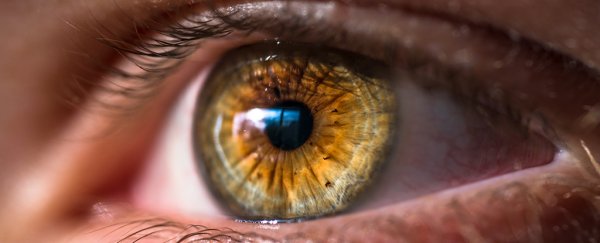Scientists have discovered that eyes and brains in rodents seem to have uncannily similar drainage systems used for self cleaning, and there's reason to think this might apply to us, too.
This sort of maintenance is necessary to wash away waste cells and fluids, and we know that brains make use of a tiny network of pipes known as the glymphatic system, similar to the lymphatic system that clears out rubbish from the rest of the body.
New tests on mice and rats show that the structures at the back of their eyes - like the optic nerve and the retina - take a page or two from the glymphatic system playbook. In the absence of the standard lymphatic vessels, they funnel waste products through a network a lot like the one the brain uses.
"Similar to the brain inside the cranial vault, the internal structures of the eye are contained within a confined space, necessitating tight control of fluid homeostasis," the researchers write in their paper.
"Our analysis provides the evidence for the existence of a highly polarised ocular clearance system that might have implications for our understanding of eye health and disease."
One of the key jobs of the brain's waste disposal system is to clear out the toxic amyloid beta proteins that have been associated with the development of Alzheimer's disease.
To see exactly how the eye disposes of similar waste, the researchers injected the eyes of lab mice with fluorescently labelled amyloid beta proteins. The subsequent tracing showed the shuttling of these proteins through specialised channels in the optic nerve, which is responsible for transmitting visual data back to the brain.
A few hours after the injection, traces of the labelled proteins were found much further afield, carried from the eye into lymph nodes inside the animal's neck as part of the body's typical garbage disposal process. Again, this matches the way the brain links up with the rest of the body.
While the brain's glymphatic system kicks in at night – which is why sleep is so important – the eye version of this cleaning system appears to be propelled into action when the iris moves in response to changing light.
It's important to note that the new research is based on mice and rats rather than humans, but these animals do have similar ocular setups to us, albeit on a more simplified level. Furthermore, the discovery of the glymphatic system in the human brain was also inspired by experiments on rats - boosting the chances that yet again, this isn't just a rodent thing.
As well as highlighting some interesting similarities between the way the eyes and the brain deal with waste, these findings could also help us understand more about eye diseases such as glaucoma.
The researchers suggest that damage to the eye's waste clearance system could be one of the causes behind the disease, where excess fluid is allowed to build up. A closer look at this newly found network should be able to tell us for sure, and perhaps hint at more effective treatments too.
"This represents only the starting point for further investigations on the impact of the ocular glymphatic system on the pathogenesis of several ocular diseases," physician Peter Wostyn from the Psychiatrisch Centrum Sint-Amandus in Belgium, who wasn't involved in the study, told Abby Olena at The Scientist.
The research has been published in Science Translational Medicine.
